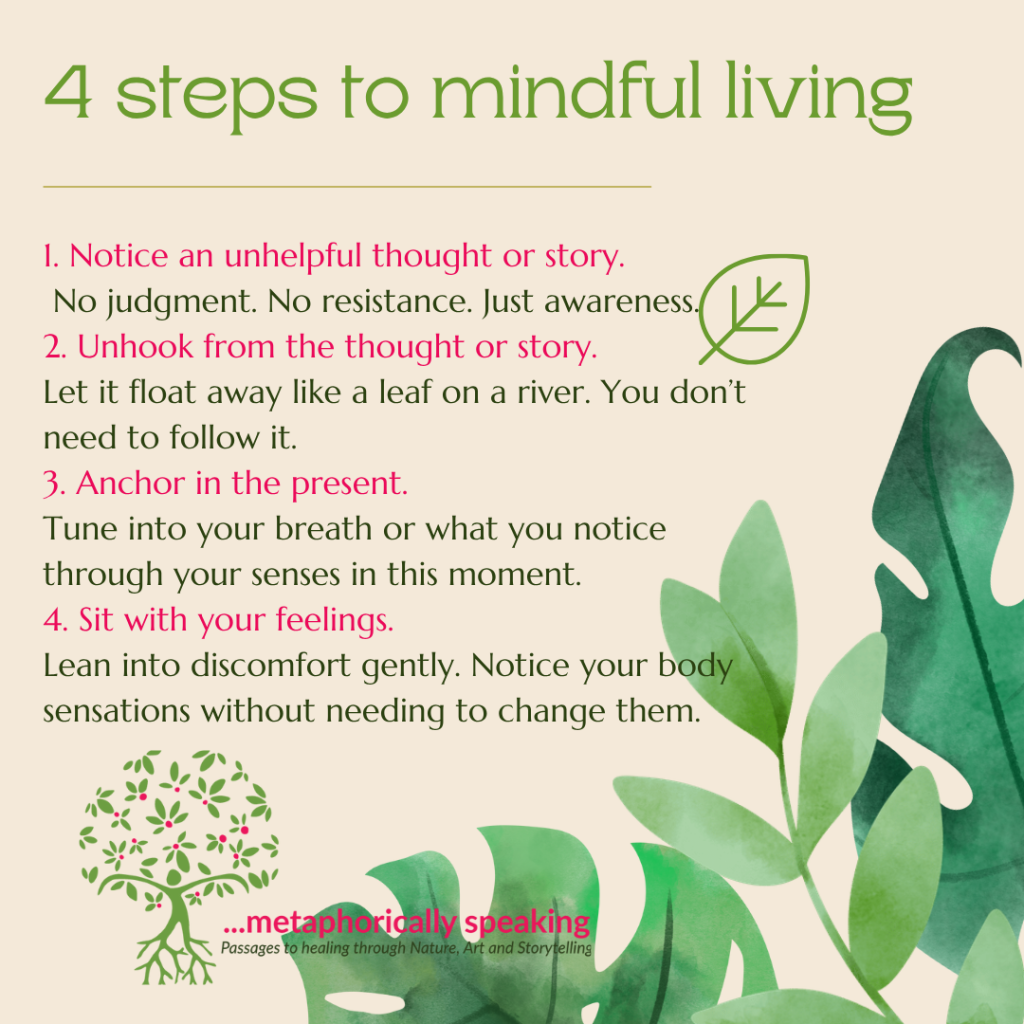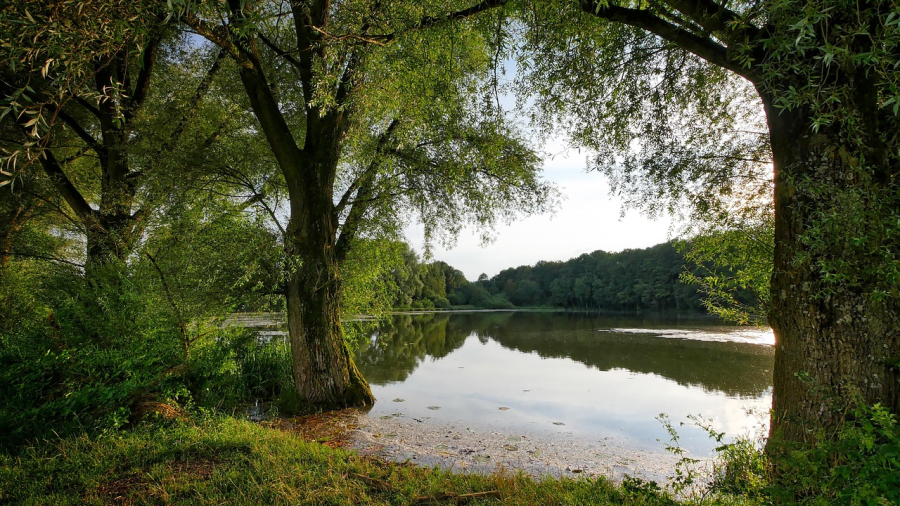Have you ever felt like your mind is racing, dragging you through memories of the past or worries about the future? If so, you’re not alone—and you’re not broken. You’re simply human.
Imagine, for a moment, that your mind is like a river. Floating gently – or sometimes tumbling chaotically – down this river are your thoughts. Each one a leaf, carried by the current. Some leaves glide by unnoticed. Others hook your attention and have you fall into the river with them. Now, imagine yourself as a tree on the riverbank. Firmly rooted in the earth, present and observing. This is your noticing self, the grounded part of you that sees thoughts as they are, without getting swept away.

This simple but powerful metaphor invites us into a different relationship with our minds. Instead of being pulled into the river of our thoughts, we can learn to stand back and watch them float by. This is the heart of Embodied Cognitive-Based Mindfulness Practice. It teaches us to shift our awareness from the chaos of the mind into the grounded stillness of the body. While the mind is often where suffering begins – through looping thoughts, old narratives, fears and doubts – the body is where pain and emotion physically show up. By learning to come home to the body, we can find a place of safety even when our inner world feels turbulent.
As we sit on the riverbank, we start to notice the directions in which the river flows. To the right, the stream pulls us toward the past – this is where regret, shame, and depression dwell. To the left, the current drags us into the future, toward anxiety, worry, and fear. Neither direction is inherently wrong, but both can carry us far away from the only place we have any real control: the present moment.
So what do we do when we realise we’ve fallen in? First, we simply notice the thought. “I notice I’m having the thought that…” is a useful mantra. There’s no need to argue with the thought, change it, or make it mean anything. Then, we unhook from the thought, letting the leaf float away. We return our attention to an anchor in the here and now: our breath, the sensation of feet on the ground, the texture of something in our hand, or the distant call of a bird. Any sensory experience that connects us with the present will do. And then, we sit with what’s happening in our body. Without trying to fix or avoid it, we notice. Tightness, heat, restlessness, heaviness – each sensation is accepted, acknowledged, and observed.
It’s not always easy. Sitting with strong emotions takes courage. But when we stop adding painful mental stories to the discomfort we’re feeling, something changes. Our body becomes a place not of overwhelm, but of truth-telling. Slowly, we might notice a shift – a sensation moving, softening, or even fading. It may be subtle, but it matters.
This practice rests on two key principles: acceptance and non-judgement. Acceptance means recognising that thoughts will continue to arise. Our job isn’t to stop them, but to allow them to come and go like leaves on the river. Non-judgement invites us to treat every thought – even the harsh, self-critical ones – with the same gentle attention. “Ah,” we might say, “there’s that old thought again,” and we let it pass.
Mindfulness isn’t a quick fix or a one-time practice. It’s a returning, over and over again, to what is real right now. It’s noticing when we’ve been swept away and choosing to come back home – to our breath, to our body, and to the solid ground of the riverbank.
You are the tree. Steady. Rooted. Observing. Let the river flow.


